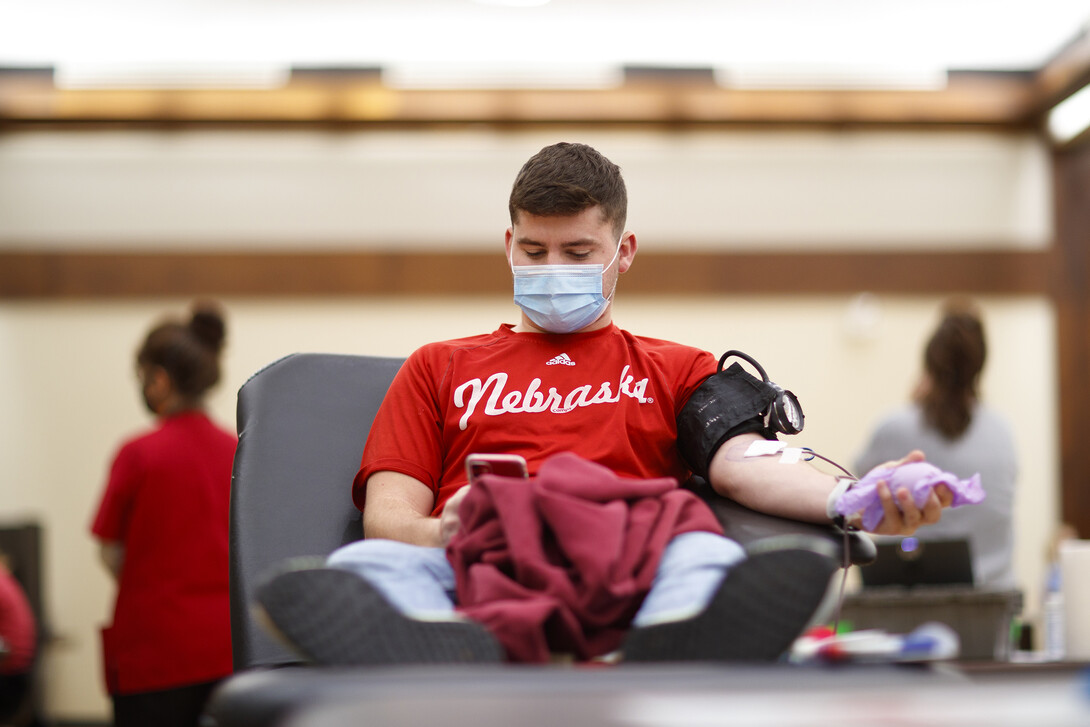
Huskers can do something really simple to make a big impact — bleed red.
The University of Nebraska–Lincoln’s ASUN Student Government is hosting the annual Homecoming Blood Drive, Sept. 27-Sept. 30. Donations can be made by any eligible donor at Nebraska East Union, 9 a.m.-4 p.m. Sept. 27, or at Nebraska Union, 11 a.m.-6 p.m. Sept. 28-30.
ASUN is partnering with both the Nebraska Community Blood Bank and Red Cross. Donors and volunteers can sign up through the ASUN website, but walk-in donors will also be accommodated.
New and repeat donors are needed right now in Nebraska. Over the course of the COVID-19 pandemic, blood donations have decreased, causing blood supply emergencies as recently as August. Kari Lundeen, community outreach representative with the Nebraska Community Blood Bank, said the blood supply is evaluated each day, and need has been critical.
“We have been on a two- or three-day supply for O positive and negative blood for a long time, so we are encouraging people to donate frequently and finding ways to reach people who have never donated before,” Lundeen said.

Lundeen said blood donations are needed by many people across the state, including children.
“It’s National Sickle Cell Awareness Month and Childhood Cancer Awareness Month in September, and those who are fighting cancer and blood diseases like sickle cell disease regularly need blood transfusions, sometimes daily,” Lundeen said.
“Certainly, college students want to make an impact, and this is free way to do that — it just takes a little bit of your time. The needle is in your arm seven to 10 minutes and you’re done.”
To get ready for donating, Lundeen shared these tips: get hydrated by drinking plenty of water in the 24 hours preceding your donation; eat a hearty meal within six hours of donating; and make sure to eat and rest after the donation as well. More tips for a successful donation and some FAQs can be found on the Nebraska Community Blood Bank’s website.
“Most issues that people have when donating are caused by not eating before the donation or drinking enough fluids,” Lundeen said.
A by-the-numbers look at the impact whole blood donations:
2 — Every two seconds, someone in the United States needs blood or platelets.
3 — The number of people a single blood donation can help. When someone makes a whole blood donation, that donation is broken down into three parts — red blood cells, plasma and platelets — which become life-saving treatments for three different patients.
8 — Types of blood, of which most cannot be cross-donors, so donors of all types are needed at all times.
10 — Number of days between the donation of blood and its subsequent use as a life-saving blood product.
24 — The number of hospitals and clinics in Nebraska, including Nebraska Medicine and Children’s Hospital and Medical Center, that receive blood products from donations made to the Nebraska Community Blood Bank.
38 — The percentage of the United States population that is eligible to give blood.
1,000 — The number of donors needed each week at the Nebraska Community Blood Bank to maintain an adequate supply of blood products each day.
3,300 — The approximate number of pints donated by the university community over the last five years during the Homecoming blood drives.
21 million — The number of blood components or units transfused each year in the United States.







